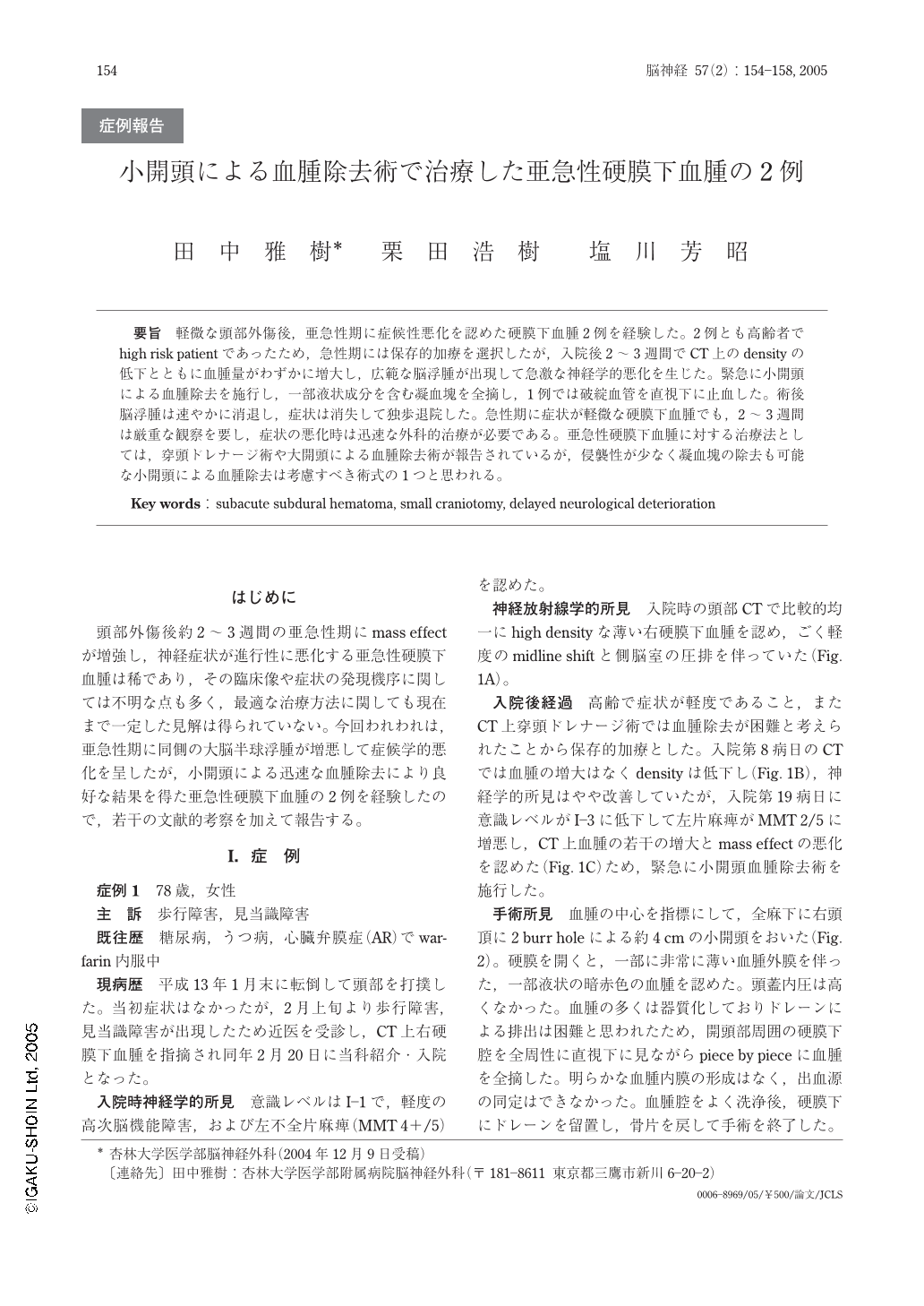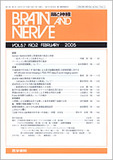Japanese
English
- 有料閲覧
- Abstract 文献概要
- 1ページ目 Look Inside
要旨 軽微な頭部外傷後,亜急性期に症候性悪化を認めた硬膜下血腫2例を経験した。2例とも高齢者でhigh risk patientであったため,急性期には保存的加療を選択したが,入院後2~3週間でCT上のdensityの低下とともに血腫量がわずかに増大し,広範な脳浮腫が出現して急激な神経学的悪化を生じた。緊急に小開頭による血腫除去を施行し,一部液状成分を含む凝血塊を全摘し,1例では破綻血管を直視下に止血した。術後脳浮腫は速やかに消退し,症状は消失して独歩退院した。急性期に症状が軽微な硬膜下血腫でも,2~3週間は厳重な観察を要し,症状の悪化時は迅速な外科的治療が必要である。亜急性硬膜下血腫に対する治療法としては,穿頭ドレナージ術や大開頭による血腫除去術が報告されているが,侵襲性が少なく凝血塊の除去も可能な小開頭による血腫除去は考慮すべき術式の1つと思われる。
The etiology and proper treatment of symptomatic subacute subdural hematomas remains to be elucidated. We describe two cases of this entity successfully treated with small craniotomy and evacuation. Both patients initially treated conservatively for traumatic thin subdural hematomas because of poor medical condition and mild neurological symptoms, but suffered abrupt neurological deterioration between 2 and 3 weeks after the admission. CT scan showed decreased density of hematomas with minimal increase in volume, and significant swelling of ipsilateral cerebral hemisphere. Urgent two-burr-hole small craniotomy was effective for evacuation of partially organized hematoma. During surgery, definite hematoma membrane was not confirmed. Postoperatively, brain swelling rapidly disappeared and both patients discharged ambulatory without neurological deficit. The present cases are a reminder of this peculiar type of hematoma in patients with delayed neurological deterioration after nonsurgical management of acute subdural hematoma. The rationale for use of small craniotomy is discussed in terms of current understanding of pathogenetic mechanism for this unusual condition.
(Received : December 9, 2004)

Copyright © 2005, Igaku-Shoin Ltd. All rights reserved.


